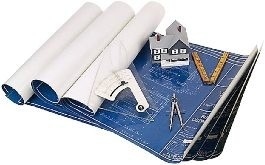 RISMEDIA, May 25, 2009-(MCT)-Fewer homeowners may be starting complete kitchen remodels, but they’re still replacing countertops and re-facing cabinets. They’re also investing in improvements to make their homes more energy-efficient, according to a recent home remodeling and repair report by ServiceMagic.com. Others are splurging on hot tubs and home theaters after realizing that they may be in their homes for some years to come-and want to make them as comfortable as possible.
RISMEDIA, May 25, 2009-(MCT)-Fewer homeowners may be starting complete kitchen remodels, but they’re still replacing countertops and re-facing cabinets. They’re also investing in improvements to make their homes more energy-efficient, according to a recent home remodeling and repair report by ServiceMagic.com. Others are splurging on hot tubs and home theaters after realizing that they may be in their homes for some years to come-and want to make them as comfortable as possible.
“People are not going bigger and better, but improving what they have more cost effectively,” said Craig Smith, CEO of ServiceMagic, a website that connects homeowners to prescreened contractors. For instance, instead of buying new furniture, they’re repairing what they have. Or they’re deep cleaning the carpet in lieu of replacing it.
All for good reason: Money is tight, lending standards strict and in a sluggish housing market you might not recoup as much of your remodeling investment at resale.
Home improvement spending is expected to decline 12% in 2009, according to Harvard University’s Joint Center for Housing Studies. Lower financing costs may be starting to stabilize the downturn in existing home sales, but “they have not been enough to offset rising unemployment and falling consumer confidence and encourage homeowners to undertake major home improvement projects,” said Kermit Baker, director of the Remodeling Futures Program at the Joint Center.
It’s much different than the days when home-equity lending was plentiful. Before doing anything, homeowners are carefully considering how they should spend their money.
In the days of easy credit, “there was a feeling of ‘we can’t go wrong, let’s just get started,'” said Bill Judson, an architect with HartmanBaldwin Design/Build, based in Claremont, Calif. “Now, it’s harder to get money, in terms of credit, and homeowners are taking it a little slower and educating themselves a little more.”
Meanwhile, those who do upgrade may be in for a bargain: Costs of materials, including lumber and copper, have dropped somewhat, Judson said. The biggest price cut has been related to lower labor costs as surviving contractors struggle to compete, he added.
The kitchen and bathroom are traditionally rooms where remodeling pays off. Some homeowners are still going through with full remodels these days, said Kimberly Sweet, editor of Kitchens.com. But they aren’t the norm. “A lot of people are making do with what they have, or maybe choosing to spruce up a few things and not do a full remodel,” Sweet said.
Nationally, the volume of countertop project requests rose 39% in the first quarter of 2009, compared with the first quarter of 2008, while major kitchen remodels are down 19%, according to ServiceMagic’s most recent Home Remodeling and Repair Index/Survey. The data comes from the company’s service requests; the site received 4.2 million requests from homeowners in 2008. Service requests for bathroom remodels were down 10% in the first quarter of this year, according to the report.
At the recent Kitchen/Bath Industry Show, affordable remodeling products included liquid stainless steel to refinish appliances and do-it-yourself backsplashes, Sweet said. Re-facing or painting cabinets and updating cabinet hardware have always been an option to remodel on a budget. For replacements, there are improved cabinet options in thermofoil, she said. Consumers still gravitate toward granite countertops, but other less expensive-yet still attractive-countertop materials are available, Sweet added. For those considering resale values, it might be best to go for minor fix-ups. “Doing all the high end may not get you the return you were looking for before,” Sweet continued. “You don’t want to be the most expensive house on the block in this market.”
According to Remodeling Magazine’s 2008-2009 Cost vs. Value report, replacement projects that improve curb appeal-including siding, windows and decks-are some of your best bets for recouping money at resale.
Upgrading windows can make a home more energy-efficient. ServiceMagic has seen more interest in projects including insulation and solar-panel installation, which cut energy bills and are likely eligible for government tax credits, according to the company’s report.
And some homeowners are investing in home energy audits, for a comprehensive view of what can be done to increase efficiency, said Smith. The cost: Between $300 and $500. “But people will pay that because the insight provided can save them a lot of money down the road.” An audit can help homeowners prioritize projects.
Most home improvement projects may be practical these days, but some splurges are also becoming popular as market conditions force people to stay in a home longer than previously planned and as the economy has them spending more time entertaining at home. As a result, some homeowners are buying hot tubs, spas and saunas, as well as TVs and other home theater components, Smith said.
Compared to large-scale remodeling projects, “hot tubs are not a massive out-of-pocket expense,” Smith said. And “with the prices of flat-screen TVs coming down and the whole ‘staycation’ phenomenon,” updated media rooms also have appeal, he added.
(c) 2009, MarketWatch.com Inc.
Distributed by McClatchy-Tribune Information Services.










